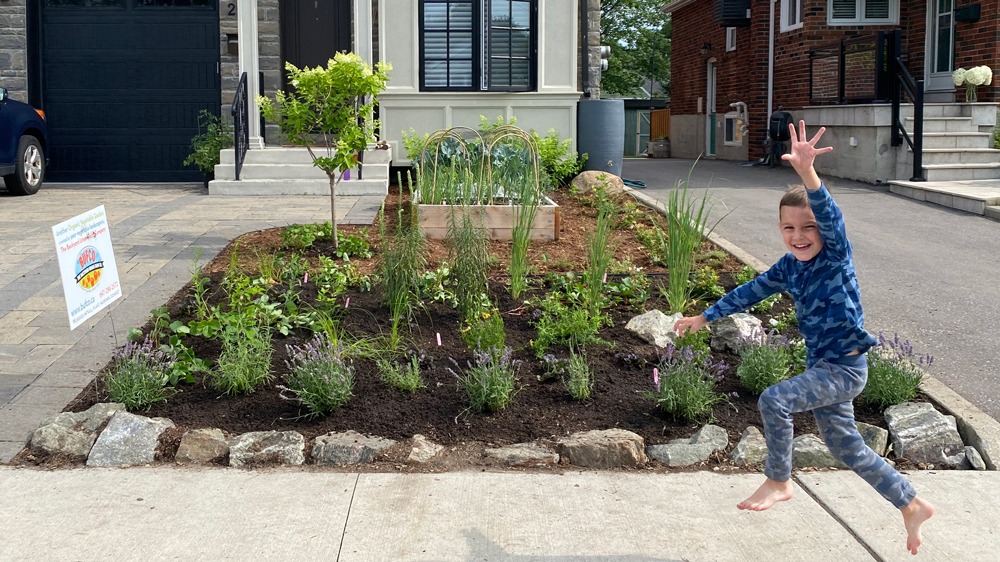Native Pollinator Gardens 101
There has been so much talk lately about pollinator gardens and happily throughout the city you can see many budding results of this important conversation. Thanks in part to Project Swallowtail and the City of Toronto’s funding grant, PollinateTO, we’re seeing flower gardens popping up everywhere, from rooftops to schools to city parks and boulevards, all with the aim of providing food and habitat for native pollinating creatures like bees, butterflies and other insects. And for those of us who grow edible gardens, we know how important pollinating insects are for a healthy and sustainable food supply.
In his book Bringing Nature Home, Botanist Doug Tallamy [1] presents his idea that our own home gardens are some of the last and most precious urban wild spaces left, and if we want to do what’s best for the planet and the creatures with whom we share it, we should aim to plant as many native species as possible.
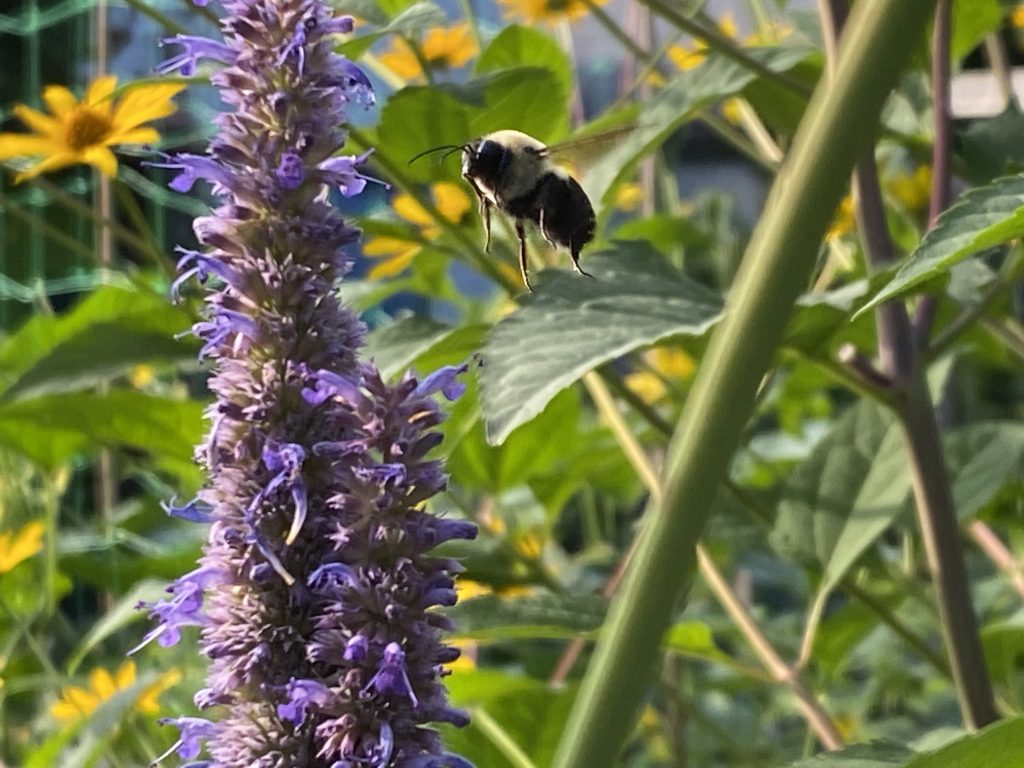
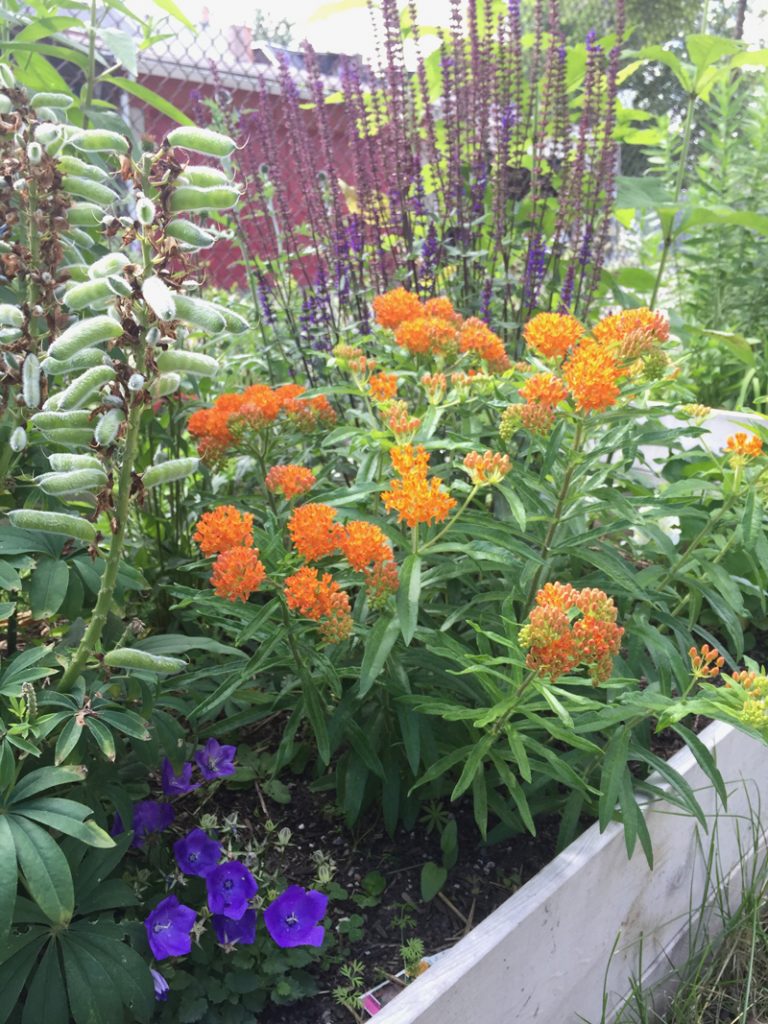
But what native species do we choose? How do we differentiate native plants from a non-native plants? And why is this important for us to consider when planning and planting our own gardens?
It is very easy to go down the rabbit hole of defining what is “native”, especially as we are continually learning, and acceptable terms are changing. Native plants are often described as being “wild” or “natural” to a given area but just because a plant is growing wild or naturally doesn’t mean it’s native. Many plants that are growing in the wild have been introduced from Europe or Asia, having been brought by settlers as medicines or foods. This introduces the question: How far back do you have to go to determine what is native versus introduced? [2]
Native plants have also been described as plants that have adapted to a particular climate and region. [2] This is a useful definition for gardeners and other land managers who are selecting plants that will thrive in a given area. We gardeners are always seeking locally grown seeds for this very reason. Interestingly though, many seeds and plants can have great adaptability. A single species can thrive in many different climates even though they might exhibit very different growth characteristics. For example, a Douglas Fir growing in BC can grow as tall 300 feet but the same species that is found growing in Mexico may only grow to 100 feet. [2] It’s the same species, yet it is thriving in a totally different region so can we conclude that the Douglas Fir is native to Mexico?
On the other hand, those plants that are not considered native have been referred to as “alien” species (an increasingly outdated term), or plants that “don’t belong”. These plants often have a bad reputation for being “invasive” (the increasingly preferred term is “opportunistic”) and can outcompete native plants that provide food and habitat for native birds, insects, mammals and microbes. But to make matters a little more confusing, not all non-native plants are invasive; many introduced plants can become established without causing environmental or economic harm.
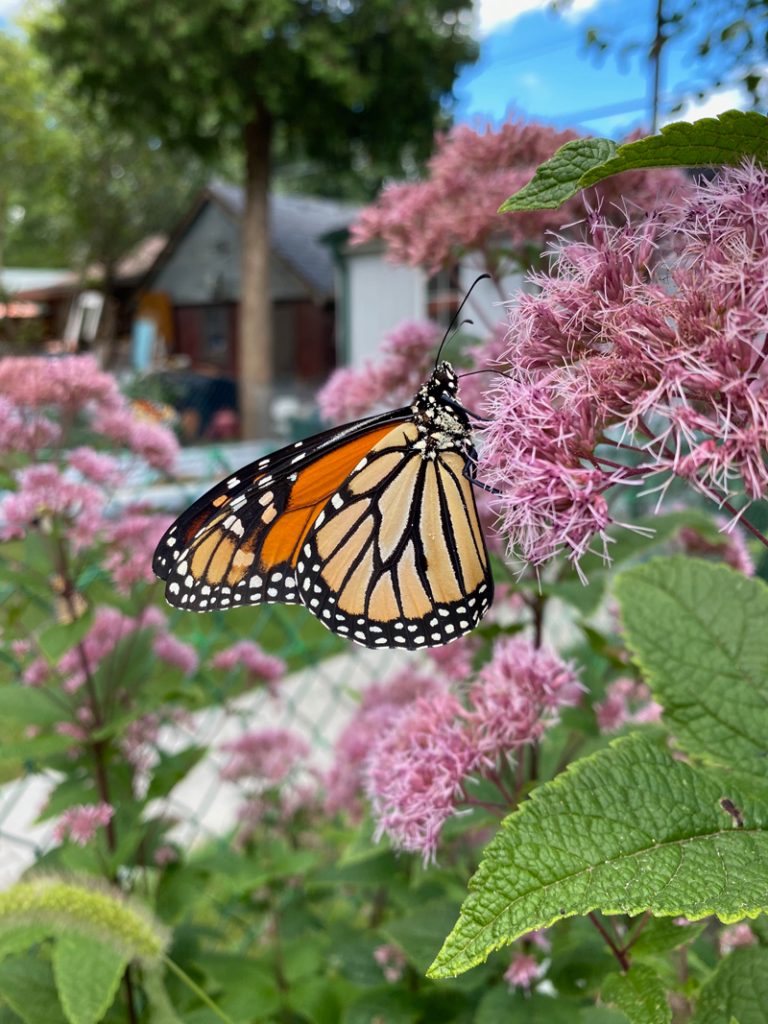
Having said that, many non-native plant species are not recognizable as food or habitat to native insects and this has a ripple effect – no food or shelter for insects means no food for birds. A reduction in bird populations means no food for their predators. Add to that greatly reduced seed dispersal – an important ecological function of birds – which in turn further reduces the number of native plants in a given area. With fewer native plants in the area, there are fewer pollinating insects. And round and round it goes.
See what I mean? The number of things to consider when planning a pollinator garden can be dizzying. So where does that leave us home gardeners who are trying to plant the best, most ecologically friendly “native” plants? Do we all need a degree in botany? Of course not!
Remember, our goal is to attract more pollinators to our gardens and we can do that by increasing biodiversity and shifting away from planting monocultures like vast expanses of meticulously manicured sod. That means choosing a wide variety of flowers, shrubs, grasses and mosses that bloom at different times throughout the season. Plant diversity provides a constant and varied food source as well as habitat for a wide variety of pollinators. They don’t all have to be “native”, so long as we make an attempt to learn their ecological roles, and make sure there are no known environmentally detrimental consequences. We can throw in our favorite hydrangeas here and there. What is important is to make the effort, to learn more and more about how nature and its interconnected systems work. Each and every organism has its role to play and that includes us human organisms! Our gardens, like our understanding, will evolve. It’s not perfection we are looking for. It is the joy of connecting with nature in ways that support nature as it exists in your particular setting.
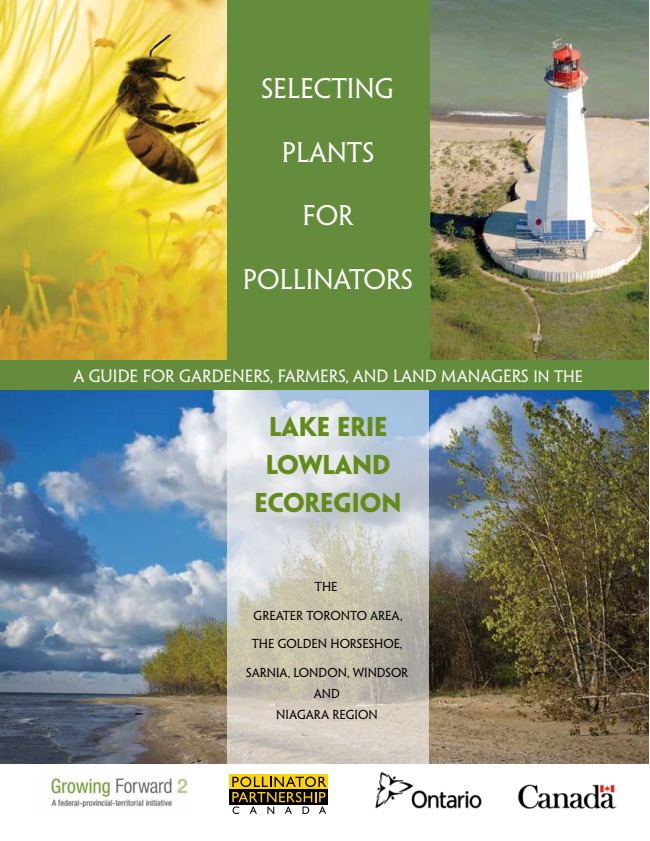
Find a trusted plant grower or nursery from your area that specializes in growing native plants. They will be able to advise you on what plants to choose for your specific garden conditions. In my opinion, what’s equally important as choosing plants defined as native is choosing plants that are grown without synthetic chemicals.
Luckily for us in Ontario there are a number of local, native plant growers and suppliers who provide a wide variety of native plants that are suitable for all kinds of growing conditions and microclimates. And most are grown without unnecessary synthetic chemicals. There is also a wealth of information out there about what to plant in our own front and backyards. The Pollinator Partnership has planting guides that are specifically organized by ecoregions. All you have to do is plug in your postal code to discover yours.
There is so much to explore that it can easily become overwhelming for a novice gardener. A good first step when learning about native plants is to explore the wild spaces close to your home – a city park, a conservation area, a school garden, or a ravine – and take notice of the plants growing there. You will begin to see some repetition from place to place and may even notice the same “wild” plants growing in your neighbour’s garden. If you have a Smart Phone, download a plant identification app such as Seek, or Picture This, and start to get to know some of your favourite species. Then have a look at your own growing space and see if there is a spot where you can add a native plant or two. My guess is that once you are visited by hungry, happy pollinators you will be hooked and before you know it, you will be designing a native pollinator garden of your own.
Sources
- www.natureconservancy.ca
- www.pollinator.org/guides
- https://chapter.ser.org/ontario/
- https://www.ontarioflora.ca/
References
[1] Tallamy, D. W. (2009). Bringing nature home: How you can sustain wildlife with native plants. Timber Press.
[2] Heide Hermary (September 30, 1948 – March 18, 2016). (2021, February 23). Retrieved November 25, 2021, from https://www.gaiacollege.net/heide-hermary.html. Native Plant Course
